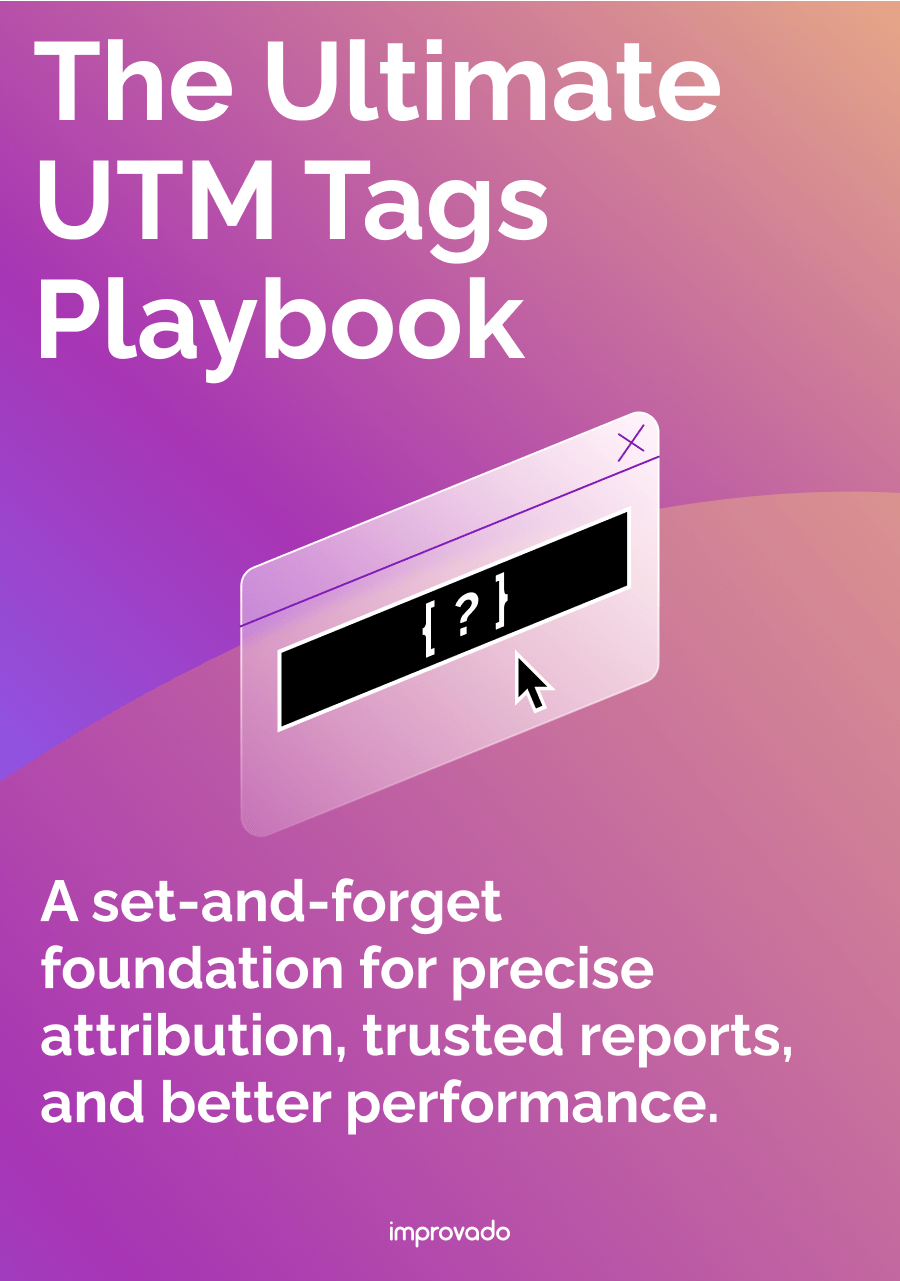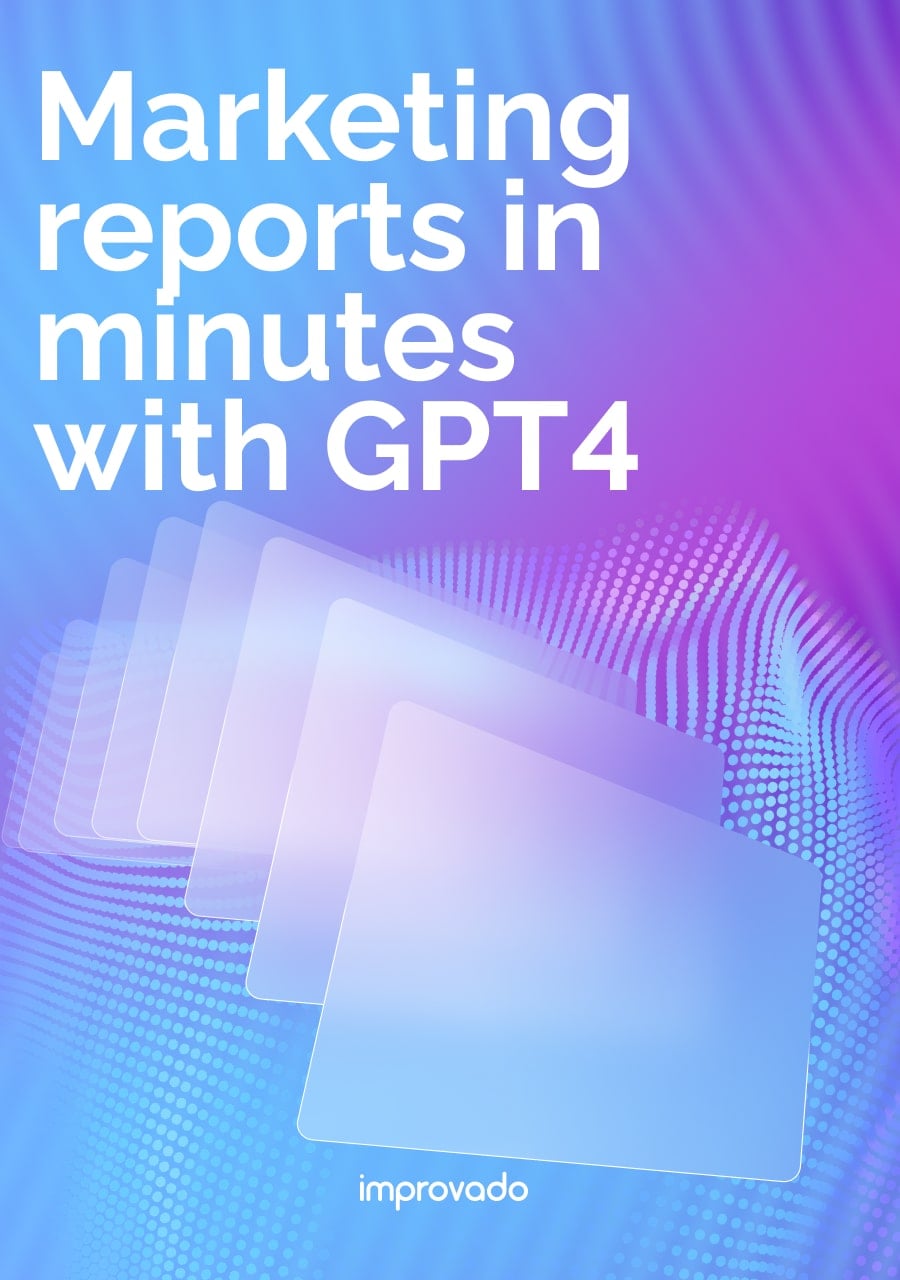Marketing is a vast field, and with its growth, a collection of acronyms has emerged to simplify communication. These acronyms are essential tools for marketers. They help in quickly conveying ideas, strategies, and techniques without the need for lengthy explanations. By understanding these acronyms, anyone can navigate the world of marketing with greater ease and clarity.
This guide breaks down 60 most common marketing acronyms and abbreviations to help you navigate marketing communications with ease.
Marketing Metrics A to Z
AIDA (Attention, Interest, Desire, Action)
AIDA stands for the four stages a consumer typically goes through when interacting with promotional content:
- Attention: This is the initial phase where marketers aim to capture the eye of the consumer. Whether through a captivating headline, striking visuals, or a compelling call to action, the goal here is to make the audience take notice.
- Interest: Once attention is grabbed, the next step is to foster interest. This involves providing more information, sharing benefits, or addressing pain points that resonate with the consumer's needs or desires.
- Desire: This phase is about deepening the emotional connection. The content should make the consumer visualize the benefits, imagine the experience, and ultimately, desire the product or service.
- Action: The culmination of the AIDA model, this phase prompts the consumer to take a definitive step, be it signing up for a newsletter, reaching out for more information, or making a purchase.
API (Application Programming Interface)
An API, or Application Programming Interface, is a set of rules and protocols that allows one software application to communicate and interact with another. It's akin to a messenger that takes requests, ensures the rules are followed, and then delivers the response back.
APIs provide the capability to consolidate data from disparate sources, offering a holistic view of campaign performances, customer interactions, and other critical metrics. Think of the real-time syncing of ad spend data from a platform like Google Ads into a central analytics dashboard, or the retrieval of social media engagement metrics into a CRM. It's through the seamless operations of APIs that marketing analytics platforms can aggregate, analyze, and present data, offering marketers a comprehensive perspective and facilitating informed decision-making.
ATL (Above The Line Advertising)
The acronym ATL, representing Above The Line Advertising, signifies a broad-reach strategy often associated with promoting brand visibility and awareness on a large scale.
ATL advertising primarily revolves around mediums that aim to cast a wide net, capturing the attention of a broad audience. This includes television and radio broadcasts, print advertisements in newspapers and magazines, outdoor billboards, YouTube, or high-reach social media campaigns. For marketers, ATL is a strategic choice when the goal is to build brand recognition, communicate a universal brand message, or launch a new product on a national or international scale. Unlike targeted advertising strategies, ATL doesn't necessarily urge immediate action but instead plants the seed for brand recall and recognition.
B2B (Business to Business)
B2B, short for business to business, describes transactions or interactions between two companies. Instead of selling to individual consumers, a B2B company sells its products or services to other businesses.
In the B2B landscape, marketing campaigns tend to be more informational and relationship-driven. Here, decision-making processes might involve multiple stakeholders, resulting in extended sales cycles. Content such as whitepapers, webinars, and case studies are common assets used to nurture leads in this arena.
B2C (Business to Consumer)
B2C, which stands for business to consumer, is a vital aspect of modern commerce. It refers to the dynamic exchange between companies and individual buyers. In this model, businesses directly offer their products or services to consumers, tailoring their strategies to resonate with personal needs and preferences.
B2C marketing often plays on emotions, aspirations, and immediate needs. Campaigns are typically shorter, flashier, and more widespread. The objective? To capture consumers' attention quickly and prompt immediate action. Whether it's a TV commercial for a new smartphone or an online ad for a fashion brand's seasonal sale, B2C marketing strategies focus on direct engagement and rapid conversions.
BR (Bounce Rate)
Bounce Rate, often abbreviated as BR, is a critical metric in the digital marketing and analytics world. It represents the percentage of visitors who land on a webpage and then depart without interacting further or navigating to another page within the same site.
The importance of the bounce rate lies in its ability to provide insights into the effectiveness and user-friendliness of a website or specific page. A high bounce rate might indicate that the landing page content isn't resonating with visitors, the page design is confusing, or the user didn't find what they were looking for. On the flip side, a lower bounce rate suggests that visitors are engaging more deeply with the content and navigating further into the site.
BTL (Below The Line Advertising)
BTL, or Below The Line Advertising, focuses on direct methods of communication, targeting specific groups or audiences with a more personalized touch.
BTL advertising is characterized by its hands-on approaches, like direct mail campaigns, brochures, trade shows, workshops, and in-store promotions. Its strength lies in its ability to offer tangible, measurable results. Instead of casting a wide net with the hope of catching a few, BTL aims for a targeted approach, ensuring that marketing efforts are directed toward those most likely to convert or make a purchase.
For marketers aiming to drive specific actions or reach niche segments, BTL advertising provides a versatile toolkit. It allows brands to engage with potential customers on a more personal level, fostering trust and driving actions in a controlled and direct manner.
CAC (Customer Acquisition Cost)
Short for Customer Acquisition Cost, CAC represents the total cost a business incurs to acquire a new customer, taking into account all promotional efforts, campaigns, research, and any other associated expenses.
Understanding CAC is fundamental for businesses, especially when gauging the effectiveness of their marketing strategies. A low CAC indicates a more efficient marketing approach, suggesting that a company is effectively reaching and converting its target audience without overspending. Conversely, a high CAC can signal inefficiencies, potentially eroding profits and indicating the need for strategy recalibration.
For marketers and financial analysts alike, monitoring CAC provides invaluable insights into the health of a business's marketing endeavors, ensuring that investments in customer outreach and engagement are yielding sustainable returns.
CAN-SPAM (Controlling the Assault of Non-Solicited Pornography And Marketing)
The CAN-SPAM Act, an acronym for Controlling the Assault of Non-Solicited Pornography And Marketing, serves as the United States' benchmark legislation in this domain. Established in 2003, this law sets the rules for commercial emails, providing recipients the right to opt-out and delineating penalties for violations.
At its core, CAN-SPAM is designed to curtail unsolicited emails, ensuring that businesses respect the inboxes of their recipients. Key provisions include transparency in communication, clearly stating the email's promotional nature, providing a legitimate physical address of the sender, and most importantly, including an easy-to-find option for recipients to unsubscribe from future emails.
For marketers, understanding and adhering to CAN-SPAM is not just about legal compliance. It's a matter of preserving brand reputation, ensuring email deliverability, and fostering trust with audiences. In a digital age where inboxes are often inundated, respecting and following these guidelines is essential for effective email marketing.
CMS (Content Management System)
The Content Management System, commonly abbreviated as CMS, is a software tool or application that allows users to create, manage, and modify digital content on websites without the need for specialized technical knowledge. By offering a user-friendly interface, CMS tools empower marketers and content creators to manage website content, blog posts, multimedia elements, and other online assets efficiently.
CPL (Cost Per Lead)
Cost Per Lead, abbreviated as CPL, refers to the amount of money a company spends to acquire a new lead or a potential customer. This is calculated by dividing the total cost of a marketing campaign by the number of leads generated from that campaign.
In essence, CPL provides insights into the economic value and efficiency of specific marketing initiatives. By monitoring CPL, marketers can evaluate which campaigns are the most cost-effective and refine strategies to optimize budget allocation. Whether you're running online ads, sponsoring events, or leveraging content marketing, understanding your CPL is vital in ensuring that marketing dollars are generating valuable prospective customers.
CPC (Cost Per Click)
Cost Per Click (CPC) represents the amount an advertiser pays each time a user clicks on their online advertisement. This model is prominently used in search engine advertising, where businesses bid on keyword placements to appear in search results, but it's also common in many display ad networks.
CPC offers a tangible way to measure the direct cost of attracting potential customers to a website. By analyzing CPC in conjunction with other metrics, like conversion rate, advertisers can get a clearer picture of their ad's performance and ROI. It aids in optimizing ad spend, refining targeting criteria, and ensuring that budget allocation aligns with high-performing ads.
CPV (Cost Per View)
Cost Per View (CPV) is a metric that denotes the cost an advertiser pays when a viewer watches a portion of their video ad or interacts with it in some way. Unlike CPC, where a click determines the cost, CPV is triggered by view count, typically when a user watches a certain percentage of the video or surpasses a set duration.
CPV provides valuable insights for advertisers aiming to boost brand awareness and engagement through video content. By evaluating CPV rates, advertisers can assess the effectiveness and financial feasibility of their video campaigns, refine their targeting, and allocate budgets to videos that resonate most with their intended audience. Whether you're promoting on platforms like YouTube or utilizing video ads on social networks, understanding your CPV is essential for maximizing video marketing ROI.
CR (Conversion Rate)
Conversion Rate, often abbreviated as CR, is a vital metric that unveils the efficacy of a campaign, webpage, or strategy. It calculates the percentage of users who take a desired action — whether that's signing up for a newsletter, making a purchase, or filling out a contact form. Specifically, CR is obtained by dividing the number of achieved conversions by the total number of visitors and then multiplying by 100.
Understanding and monitoring the conversion rate is essential for businesses looking to optimize their online performance. A higher CR indicates a more effective landing page or a well-targeted marketing campaign, while a lower CR can signal potential areas for improvement. Through A/B testing, website adjustments, and audience targeting tweaks, businesses can experiment and adjust strategies to lift their CR, ensuring they get the most value from their online traffic.
CRM (Customer Relationship Management)
The backbone of many successful businesses today, Customer Relationship Management, known by its acronym CRM, is a technology-driven approach to manage and improve interactions with current and potential customers. CRM systems consolidate customer data from various touchpoints — like websites, emails, social media, and more — into a centralized platform. This consolidated view enables businesses to streamline processes, personalize interactions, and foresee customer needs.
CRO (Conversion Rate Optimization)
Conversion Rate Optimization, commonly referred to as CRO, is the systematic process of increasing the likelihood of website visitors taking specific desired actions, be it purchasing a product, signing up for a newsletter, or filling out an inquiry form. It's not just about increasing traffic but making the most of the traffic you have.
The essence of CRO lies in understanding how users navigate your site, what actions they engage in, and what might be holding them back from completing a conversion. Through rigorous testing, data analysis, and design alterations, marketers can identify the best strategies to enhance user experience and, consequently, boost conversion rates.
CRO can encompass various techniques — from tweaking call-to-action buttons and streamlining checkout processes to overhauling landing page designs. The ultimate goal remains consistent: to ensure that every element of a website or digital campaign is operating at peak efficiency, nudging visitors closer to a desired outcome and maximizing the return on digital investments.
CSAT (Customer Satisfaction Score)
CSAT, or Customer Satisfaction Score, is a valuable metric used to measure how content customers are with a product or service. It typically involves asking customers to rate their experience on a numerical scale, often ranging from 1 to 5.
The resulting score is then averaged and can be used to track satisfaction over time or in response to changes in a product or service. Regularly monitoring CSAT can offer businesses invaluable insights into areas of excellence or potential improvements, making it a favorite among customer-centric organizations.
CSS (Cascading Style Sheets)
CSS, or Cascading Style Sheets, is a fundamental technology in web development. It's a language used to dictate how the elements of a webpage look — from fonts and colors to layouts and animations. In essence, while HTML provides the structure of a website (like the foundation and frame of a house), CSS offers the aesthetics and design (the paint, curtains, and decor).
For marketers, having a basic understanding of CSS can be beneficial when optimizing landing pages, tweaking website designs, or collaborating with web developers to ensure a brand-consistent online presence.
CTA (Call to Action)
Call to Action, or CTA, is a staple in the marketer's arsenal. It's the prompt, often in the form of a button or link, that tells website visitors, email recipients, or ad viewers what action they should take next. Whether it's "Buy Now," "Sign Up," or "Learn More," a well-crafted CTA is designed to grab attention and guide potential customers toward the next step in the conversion process.
The effectiveness of a CTA hinges on its clarity, design, and placement. It's more than just a button; it's a strategic tool that, when used correctly, can significantly influence user behavior and drive desired outcomes in digital campaigns.
CTO (Click To Open Rate)
Click To Open Rate (CTO) provides marketers with a focused lens on email effectiveness. This metric represents the ratio of recipients who clicked on a link in an email to those who opened the email. In simpler terms, if you're wondering how engaging your email content is once someone has opened it, CTO provides the answer.
By measuring CTO, marketers can gauge the relevance and appeal of their email content, design, and CTAs. A higher CTO typically indicates that the email content was compelling enough to drive recipients to interact further. Regularly tracking this metric can assist in refining email strategies and boosting overall campaign success.
CTR (Click Through Rate)
Click Through Rate (CTR) stands out as a reliable indicator of audience interest and ad relevance. Defined as the percentage of individuals who click on an ad (or link) relative to the total number who saw the ad (impressions), CTR sheds light on the effectiveness of online advertising campaigns. Whether for a search ad, display ad, or an embedded link in an email, a higher CTR signifies that the message or offer resonates with the target audience.
Monitoring and optimizing for CTR is essential, as it not only helps in assessing the appeal of the content but also influences costs in pay-per-click campaigns and ad placements.
DA (Domain Authority)
Domain Authority (DA) serves as a beacon for marketers looking to assess the potential performance of a website in search engine rankings. Developed by Moz, DA is a score, ranging from 1 to 100, that predicts how well a website is likely to rank on search engine result pages.
While it's not an official metric from search engines like Google, it's widely used in the SEO community as a comparative tool. A site with a higher DA score is generally considered more authoritative and trustworthy. By understanding and monitoring DA, marketers can strategize better link-building efforts and prioritize partnerships with high-DA sites.
DMP (Data Management Platform)
Data Management Platform (DMP) is a centralized system that collects, organizes, and activates large volumes of structured and unstructured data from various sources. Marketers utilize DMPs to segment and target audiences more effectively across multiple channels. By providing a unified view of a customer, DMPs enable more coherent and personalized marketing efforts.
DSP (Demand Side Platform)
Demand Side Platform (DSP) is an automated platform that allows advertisers and agencies to buy digital ad placements efficiently across a myriad of publisher sites. By leveraging real-time bidding for ads, DSPs ensure that marketers can purchase the most relevant ad impressions for their target audience at optimal prices. Beyond just buying, DSPs also provide robust tracking and analytics tools, enabling advertisers to measure the success of their campaigns and refine strategies in real-time.
EPC (Earnings Per Click)
Earnings Per Click (EPC) throws light on the effectiveness of affiliate marketing campaigns, serving as a key metric that evaluates how much affiliates earn on average for every click generated. By dividing the total commission earned by the total number of clicks, marketers gain a clear picture of a campaign's profitability. EPC becomes instrumental in comparing various offers or campaigns, ensuring that marketing efforts aren't just driving traffic, but also contributing to the bottom line.
ESP (Email Service Provider)
The Email Service Provider (ESP) is to email campaigns what a skilled conductor is to an orchestra: indispensable. ESPs facilitate the sending, receiving, and tracking of bulk emails, making it an invaluable tool for marketers. From managing mailing lists to automating email sequences and providing analytical insights, ESPs offer a comprehensive suite to ensure campaigns reach inboxes and elicit the desired actions. In the vast realm of digital marketing, email remains a stalwart, and ESPs ensure its effective deployment.
.png)
.jpeg)


.png)
